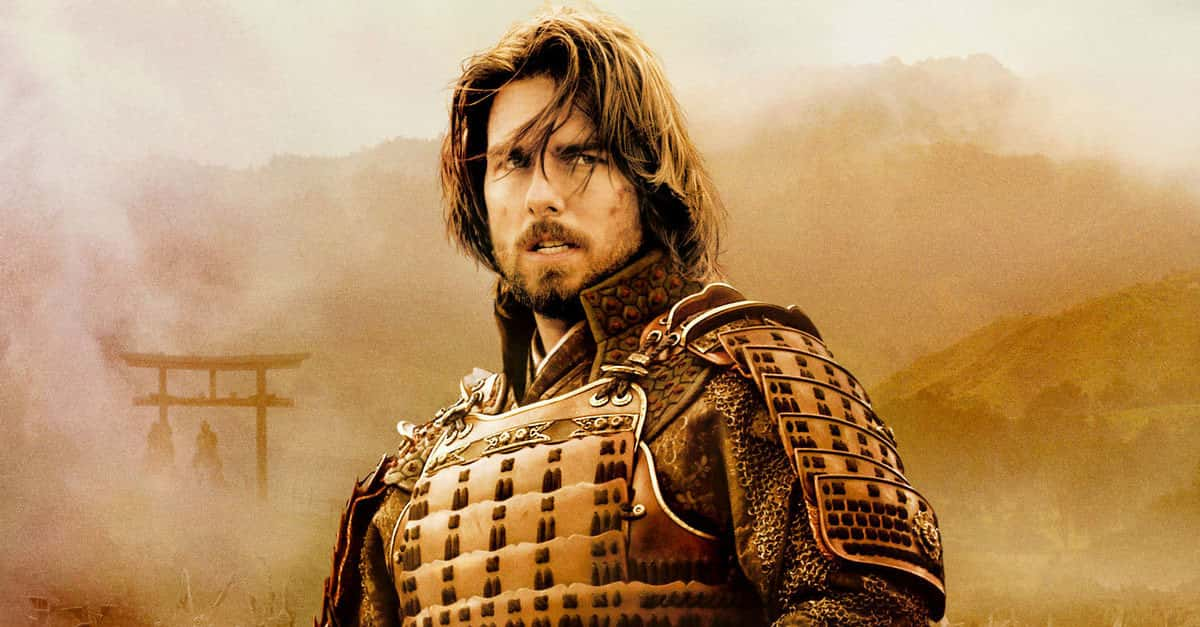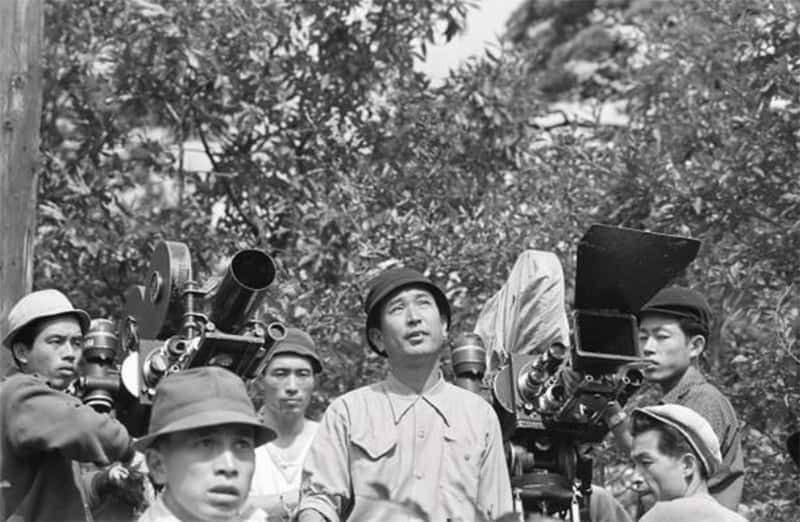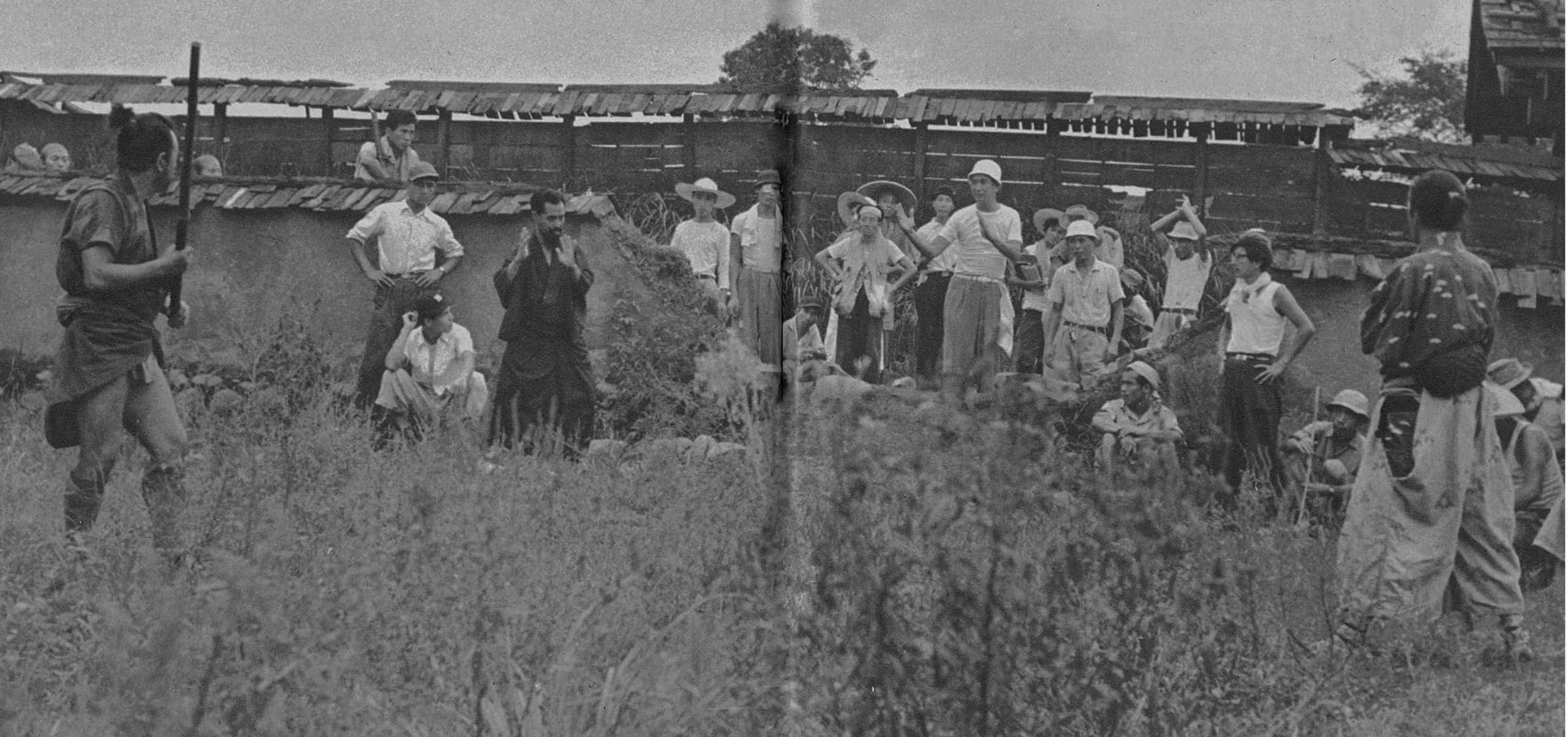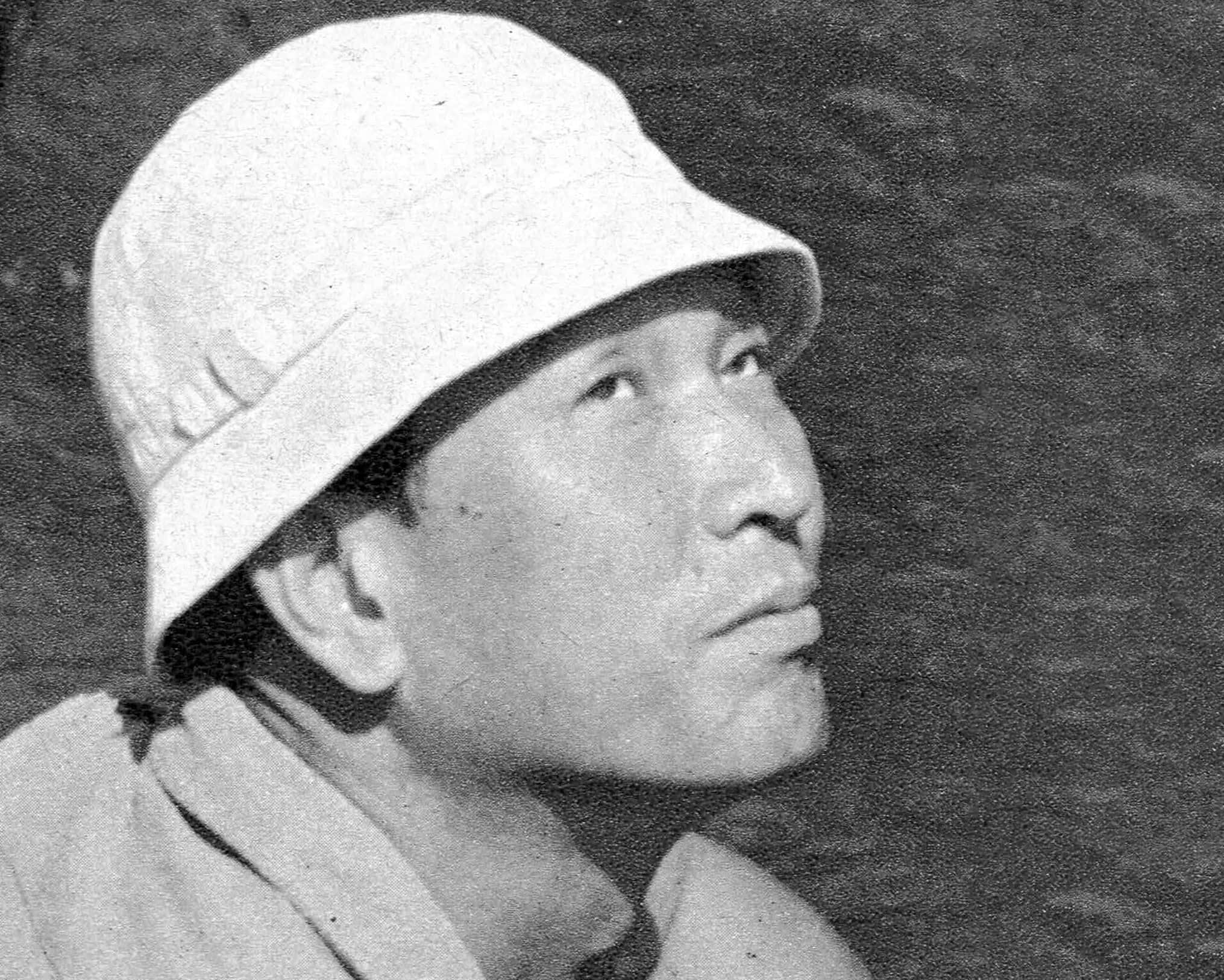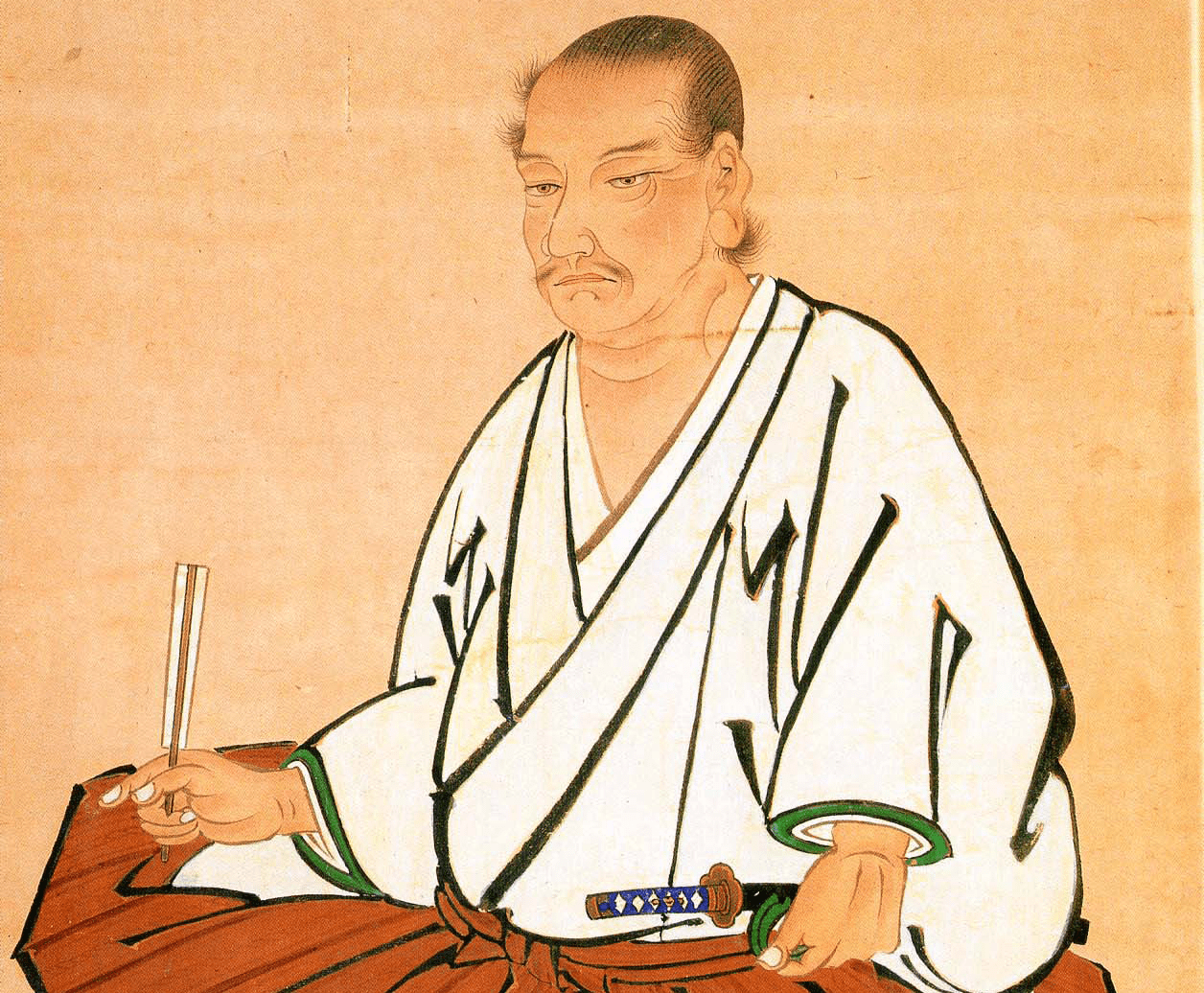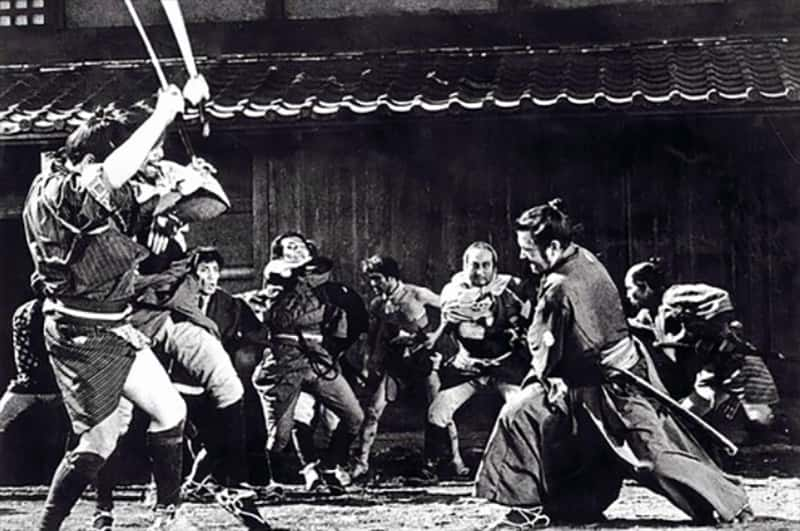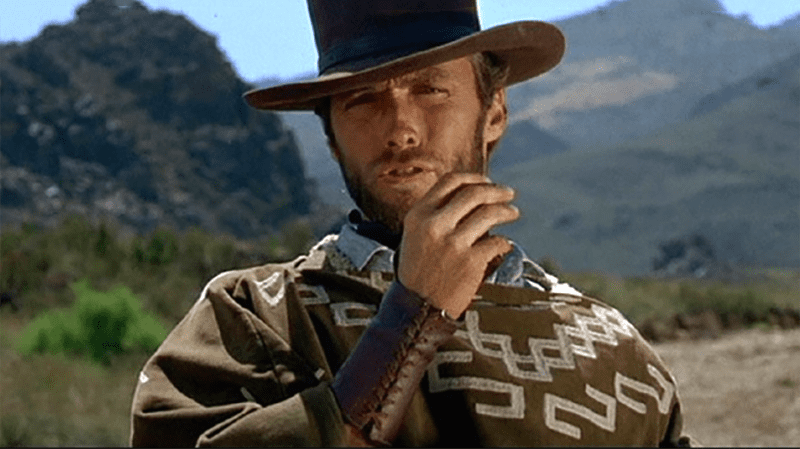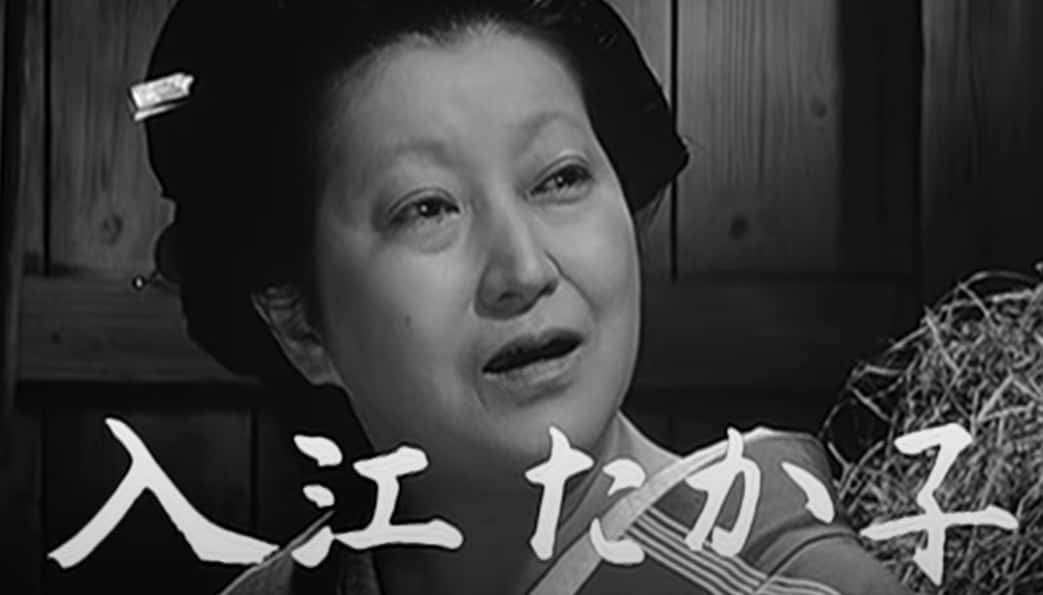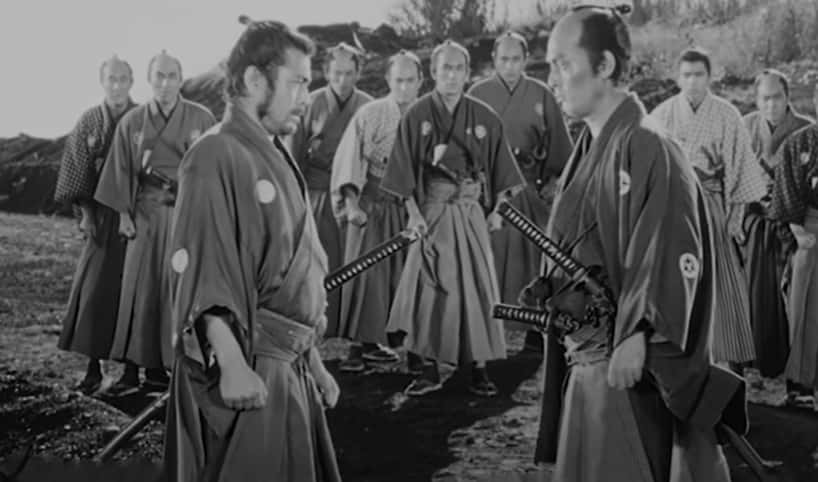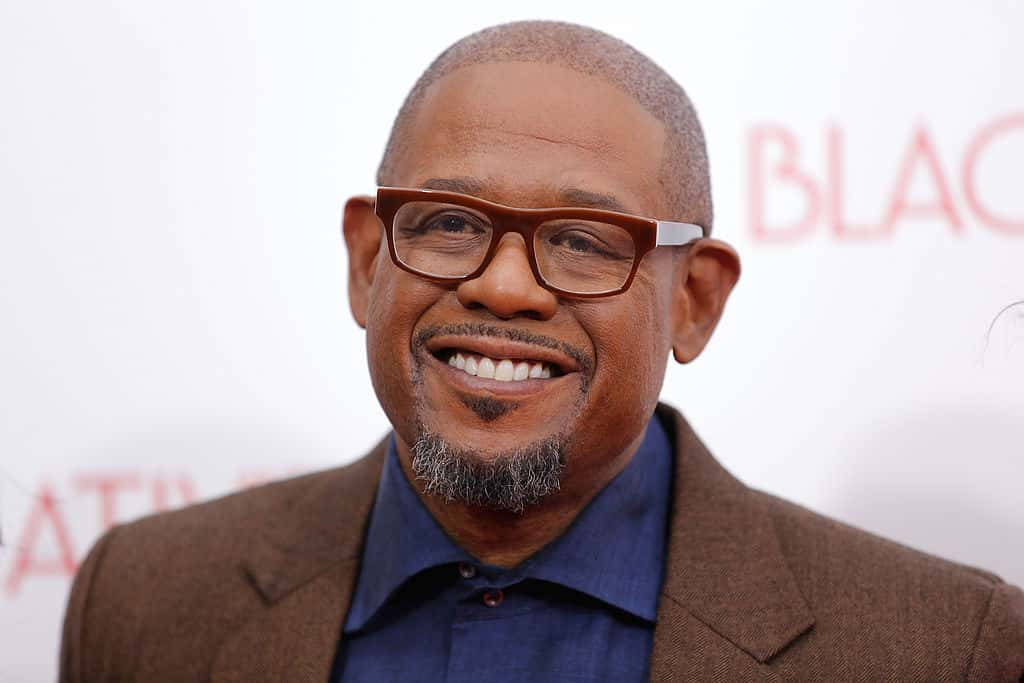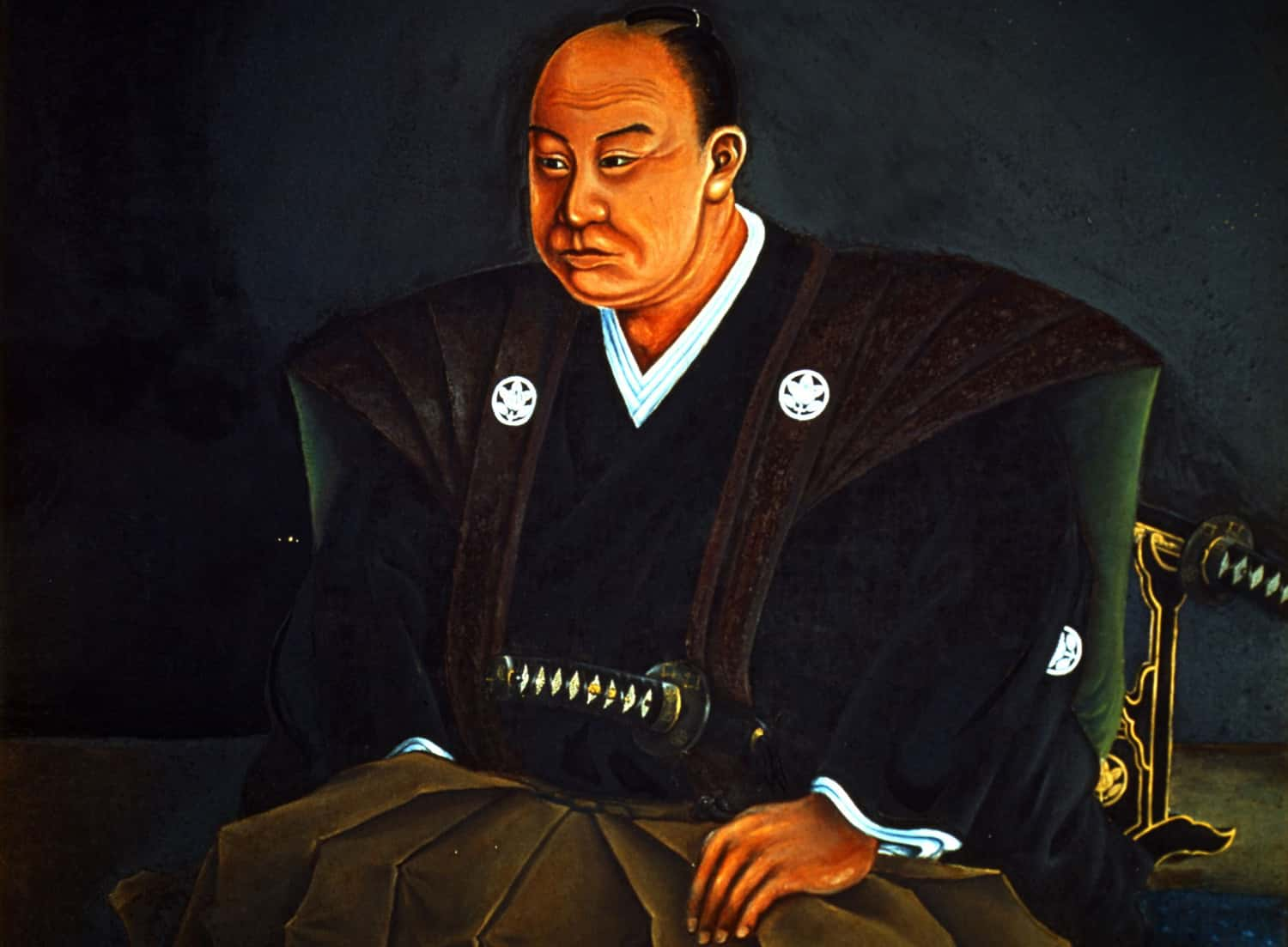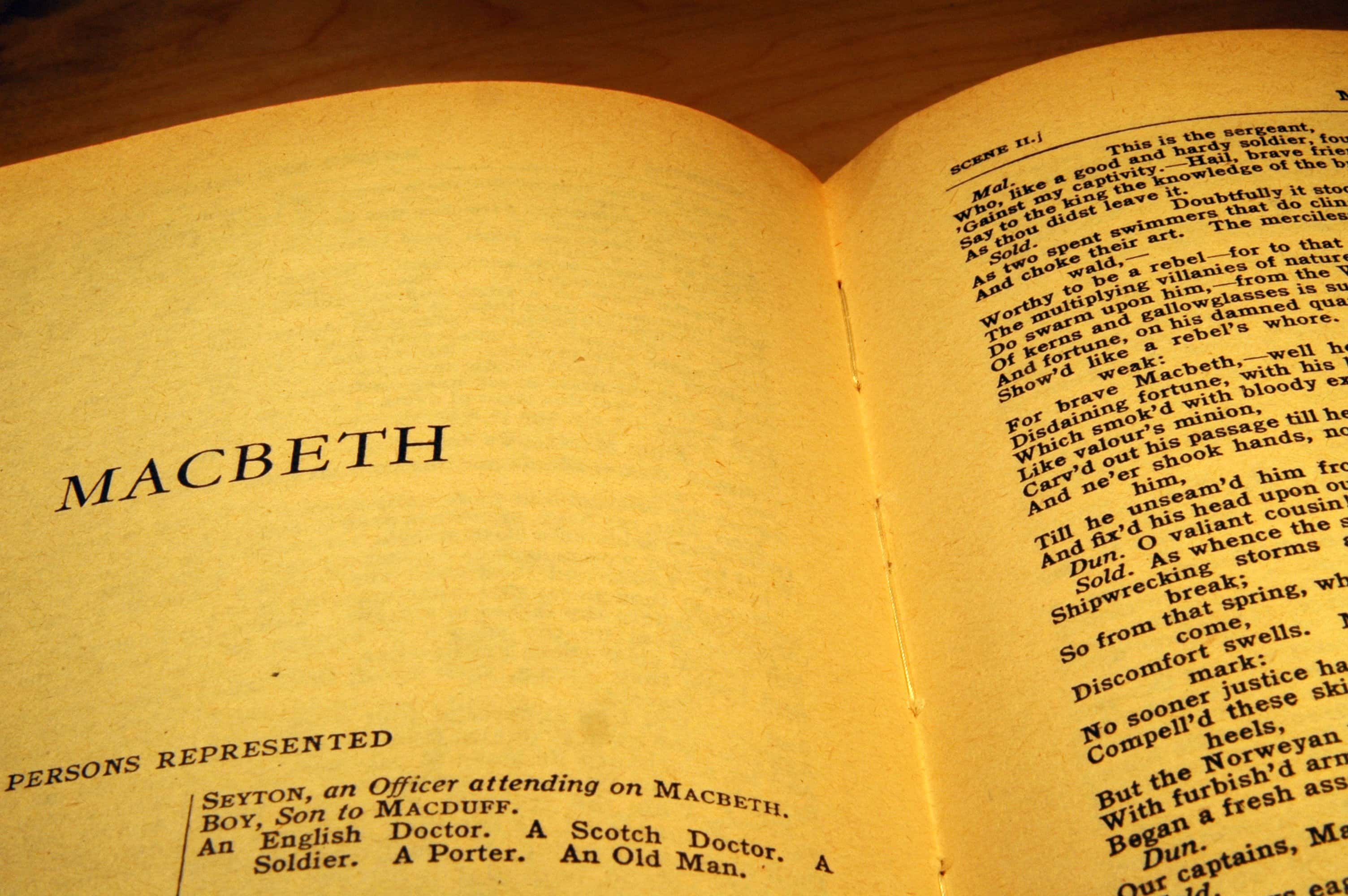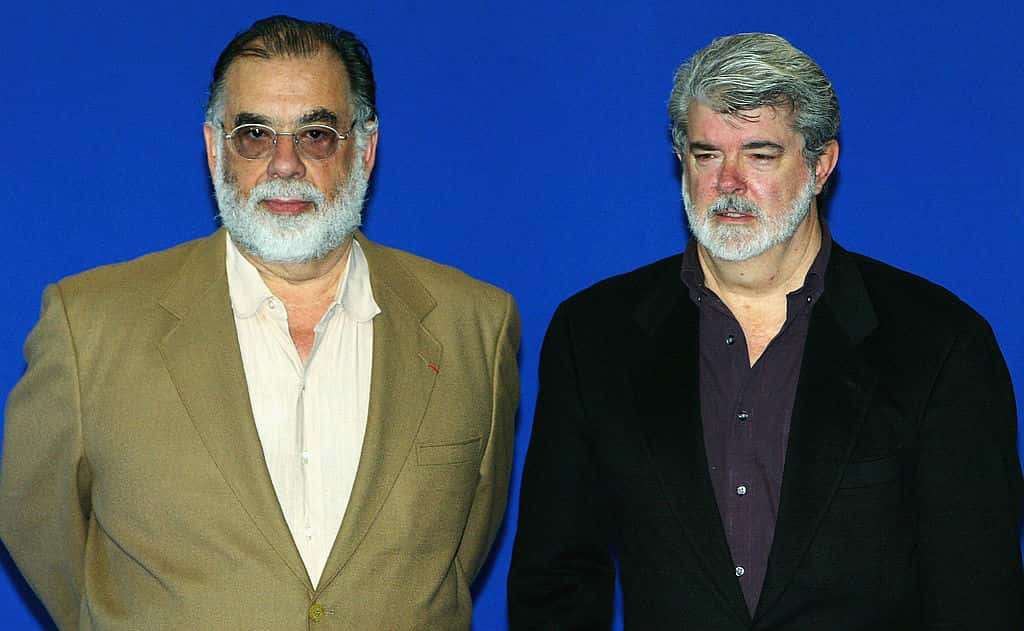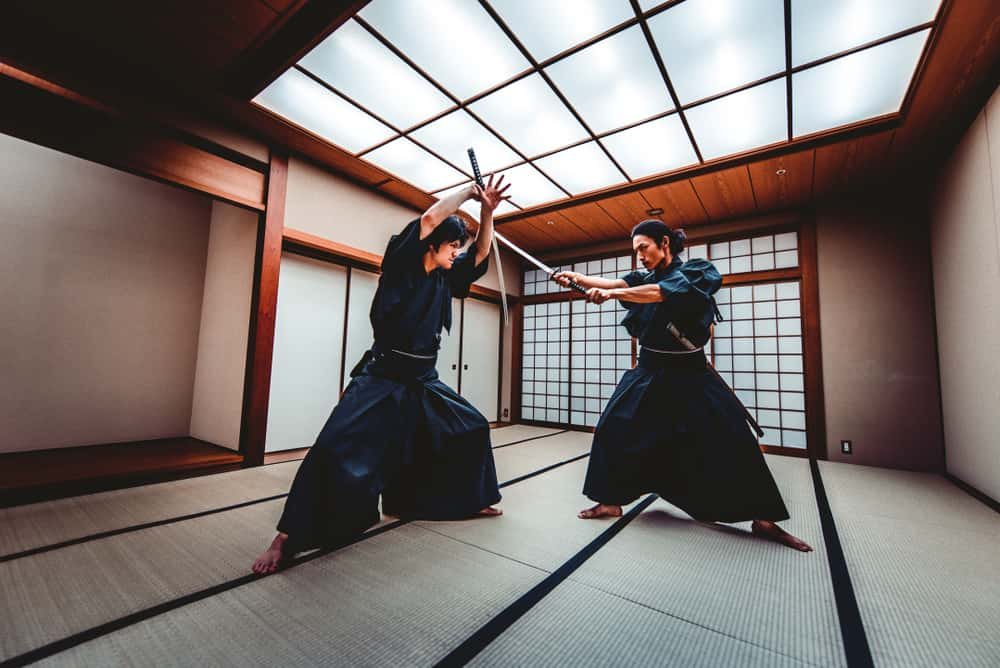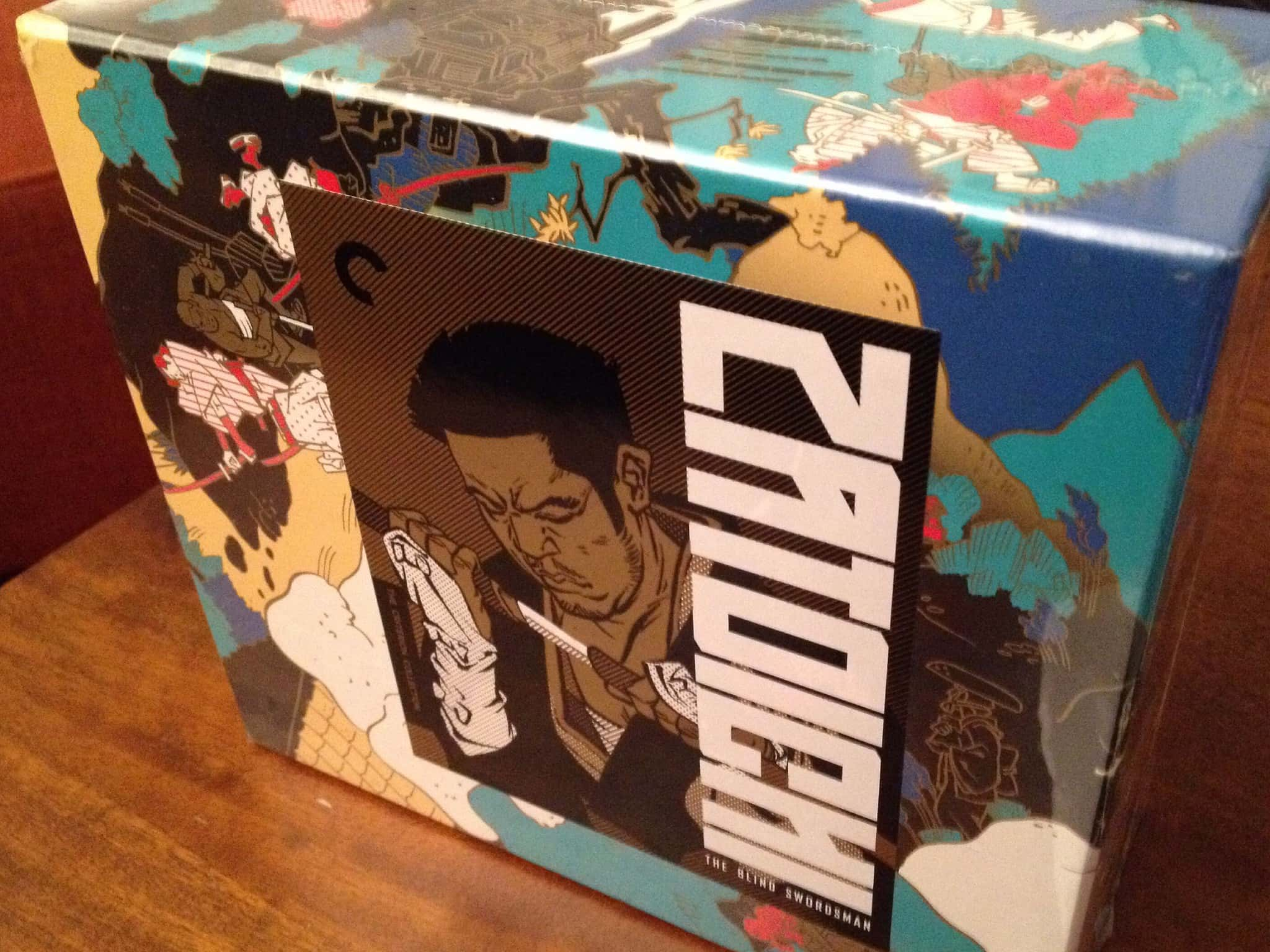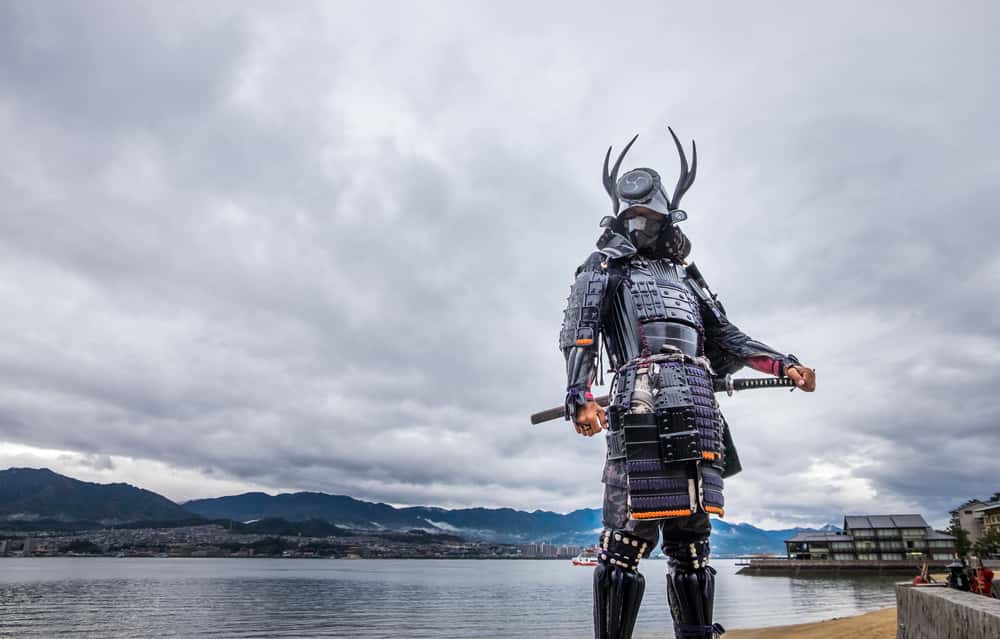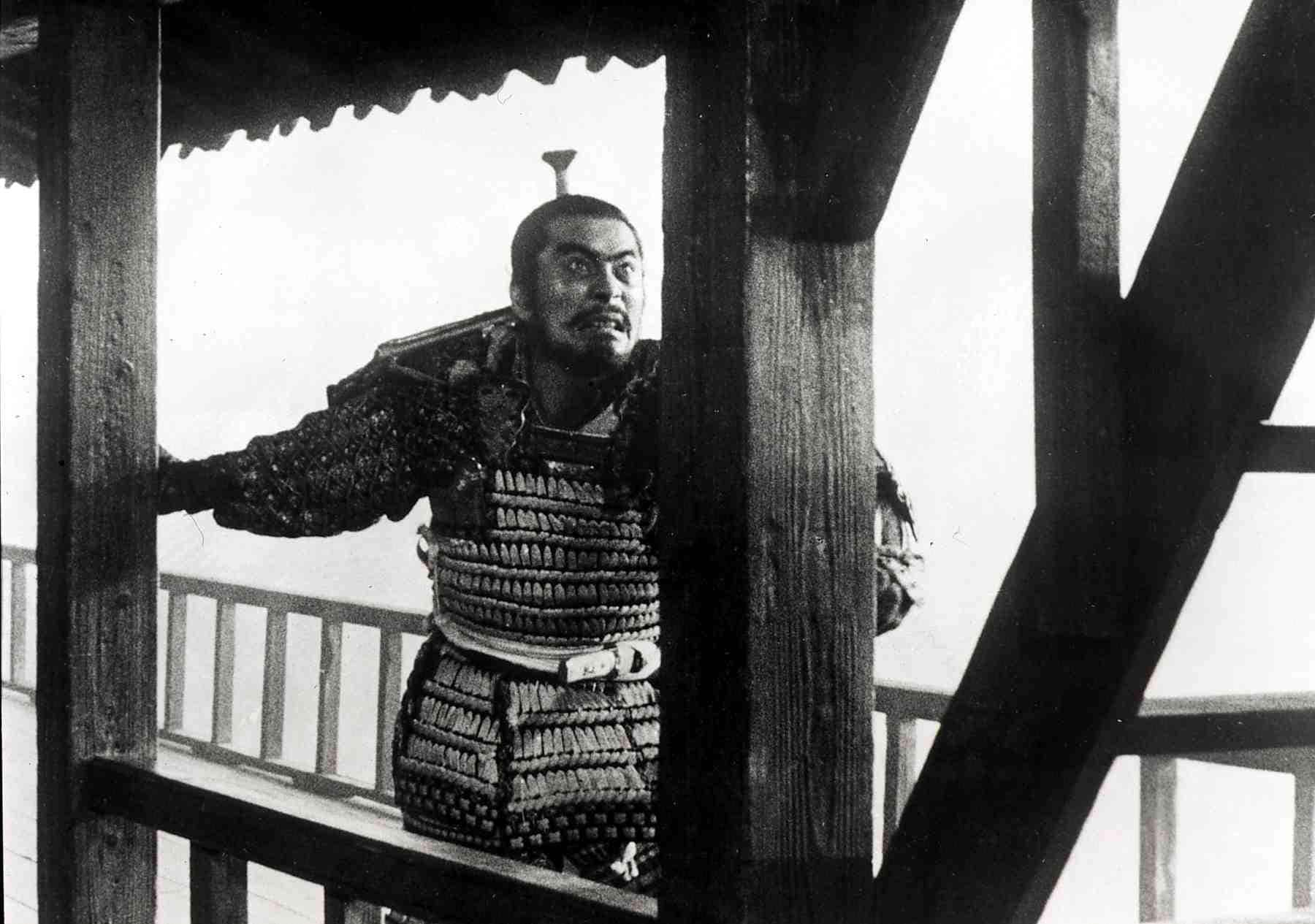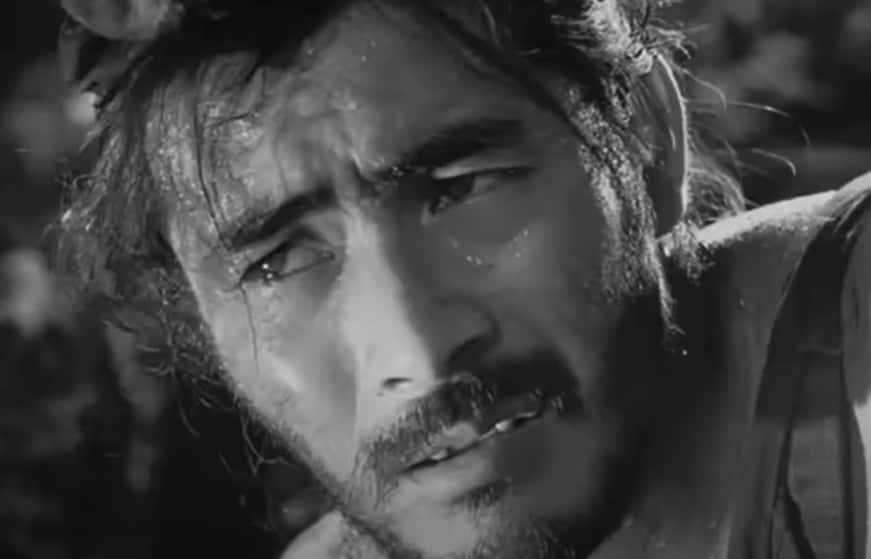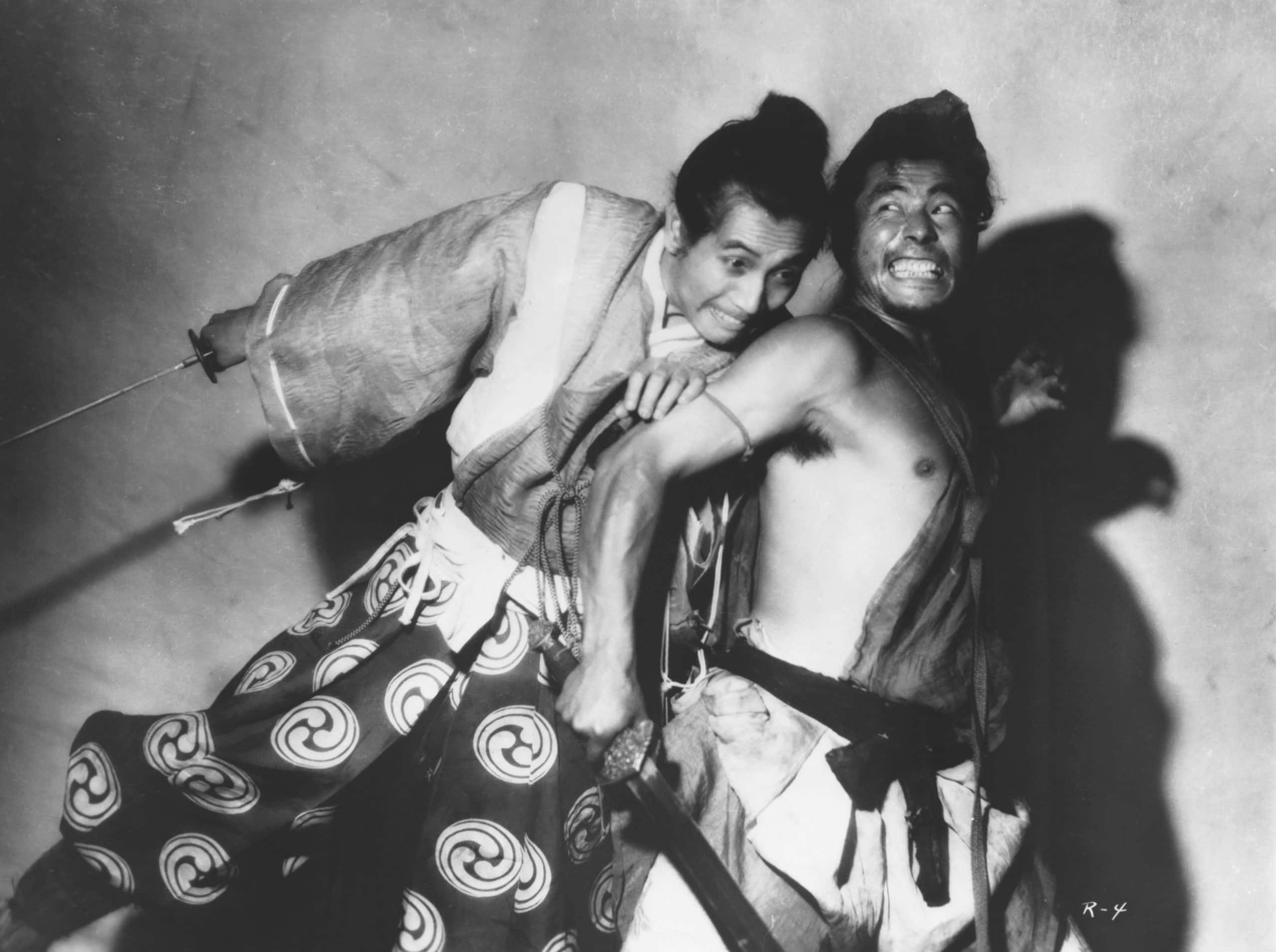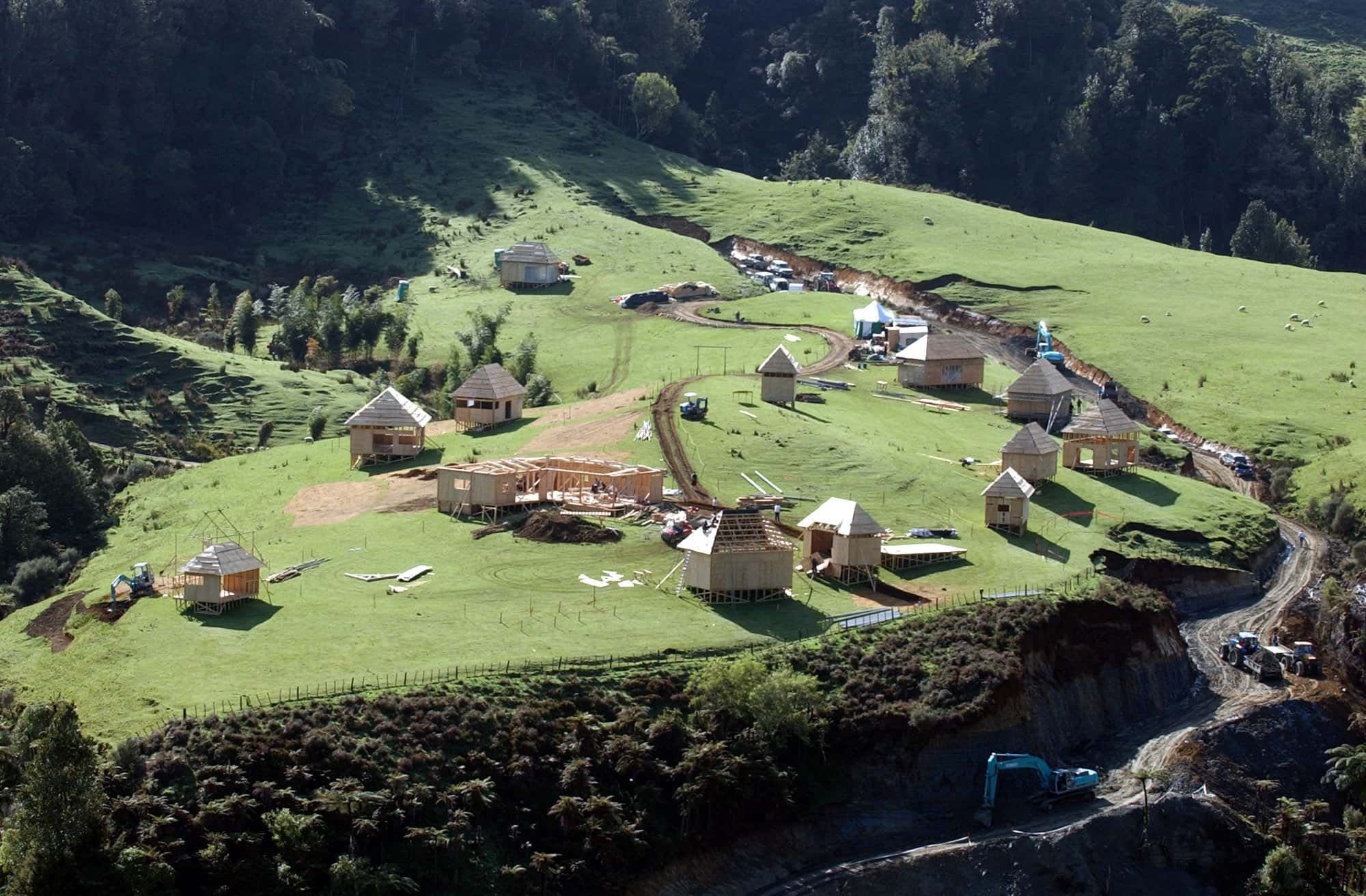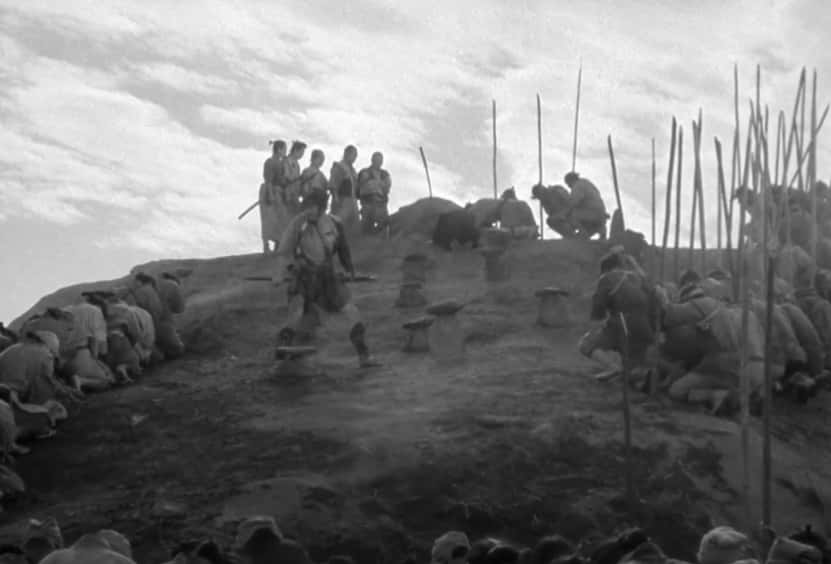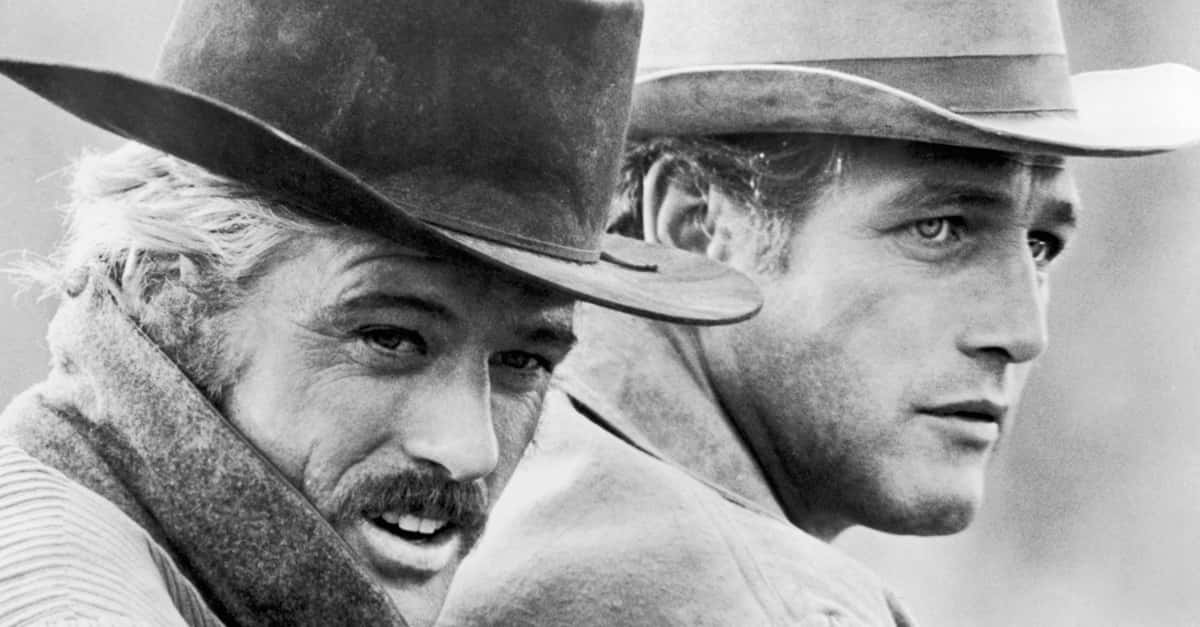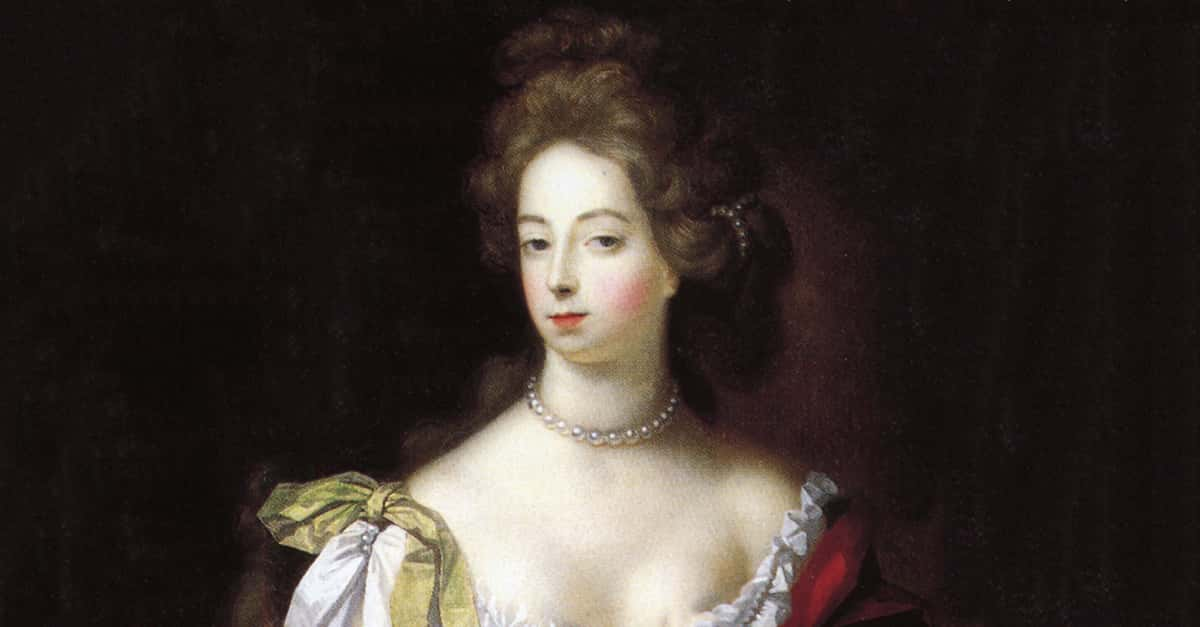As a part of the military nobility of feudal Japan, the samurai protected the country with dedication and discipline. Entrenched in the Bushido code, the samurai have fascinated the world for hundreds of years, making them ripe material for film. Being fertile grounds for exploration, some incredible art has been made about them over the years. Here are some of the most interesting facts about the samurai film genre.
Samurai Films Facts
37. Leave It To Hollywood
The Last Samurai showed Western audiences that under special circumstances, an outsider could indeed become a samurai and fight among them, though it is extremely rare. There have been several instances when this occurred in real life, however, Tom Cruise’s character in The Last Samurai is based on people who actually did not become samurai. Because that makes sense.
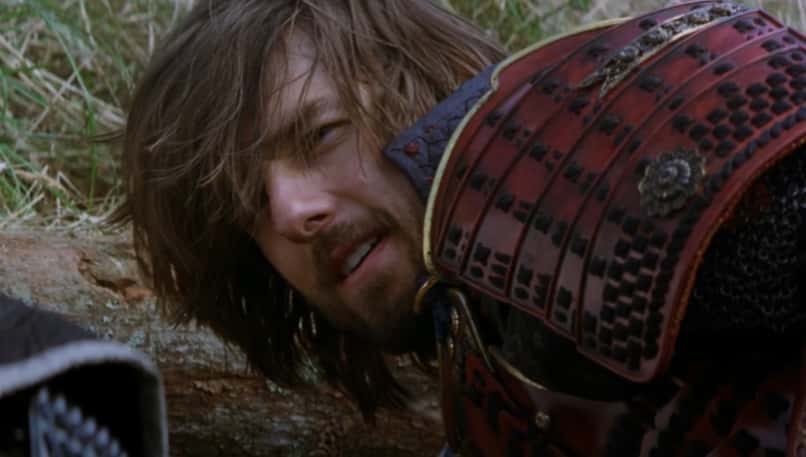 The Last Samurai (2003), Warner Bros.
The Last Samurai (2003), Warner Bros.
36. Who Needs Practice
Akira Kurosawa is inarguably one of the greatest film directors in history, and his iconic masterpiece Seven Samurai has a place atop the mantle of not just samurai films, but Japanese film as well. Even more impressive, however, is that it was the first samurai film that Kurosawa attempted to make. While his previous films dealt with samurai, it wasn’t until this that they drove the narrative.
35. Just One Samurai
The original concept for Seven Samurai was about the day in the life of one samurai, who becomes disgraced at work and commits ritual suicide upon returning home. As it evolved and grew into the monster it became, the budget swelled to $500,000. It may not seem like a lot today, but considering the average Japanese picture cost $70,000 at the time, it was extraordinary. As the price of the film kept rising, so did the shoot, and it ended up taking an entire year to complete the film.
34. Gone Fishing
As the film shoot grew longer and longer, and the budget grew higher and higher, the production tried to take control of the situation and shut down the shoot. Kurosawa, being the badass he was, didn’t fight with the studio or even argue, instead, he protested their treatment of the movie by going fishing whenever they tried to exert pressure on him. Not only did he know it was too good to shut down, but the production company had invested too much money already to even think about scrapping the project.
33. Undefeated
One can’t make a film as great as Seven Samurai without serious research, and Kurosawa knew this. He spent copious amounts of time researching the samurai era, and its leading figures, and then molded many characters off of real people. For instance, the legendary character of Kyuzo, the master no one wants to mess with, was based on Miyamoto Musashi, one of the greatest swordsmen to ever live. Musashi is famous for never having lost a battle, and for writing The Book of Five Rings, which is one of the greatest battle manuals ever created.
32. Fast Learner
The actor who played Kyuzo in Seven Samurai, Seiji Miyaguchi, portrayed his character so well that he actually seems to be a master swordsman. However, he had actually never picked up a sword in his life prior to filming, and it was Kurosawa’s genius that gave the impression that he was a master, through tight choreography and impressive editing.
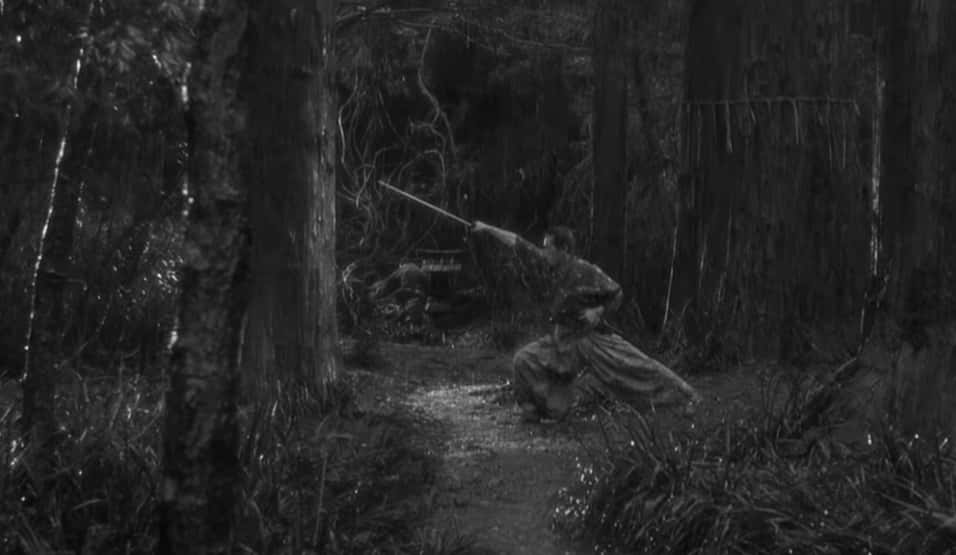 Seven Samurai (1954), Toho Company
Seven Samurai (1954), Toho Company
31. The Glare in the Eye
Kurosawa wasn’t afraid to experiment in order to achieve the desired effect he wanted in a scene, and sometimes it had negative effects on those around him. While filming the love scenes in Seven Samurai, he used angled mirrors to refract light onto the face of Shino in order to create a shimmering. Of course, this took many takes to achieve, and in the end, the actress, Keiko Tsushima, was left with injured eyes.
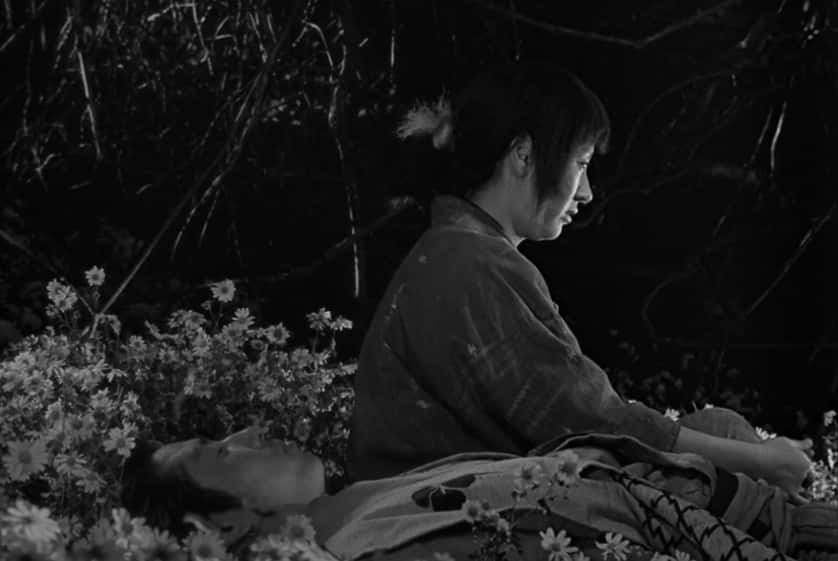 Seven Samurai (1954), Toho Company
Seven Samurai (1954), Toho Company
30. Fine Line Between Homage and Theft
Another one of Kurosawa’s masterpieces is the samurai film Yojimbo. The film had such a widespread influence and appreciation, that directors in the west made unofficial remakes of it. A famous example is Sergio Leone and Clint Eastwood’s A Fistful of Dollars, which is almost shot for shot the same movie. Upon seeing the film, Kurosawa wrote a letter to Leone saying “Signor Leone, I have just had the chance to see your film. It is a very fine film, but it is my film.”
29. The Character Has No Name
Actually, the entire “Dollars Trilogy” by Sergio Leone is a reference to this movie, as Clint Eastwood’s “Man with No Name” is based on the character of Sanjuro from both Yojimbo and Sanjuro. The name Sanjuro is created by the character in the films, and the audience never learns who he truly is—rather we are left with a “Ronin with No Name.”

History's most fascinating stories and darkest secrets, delivered to your inbox daily.
28. Dead Teeth
Sanjuro, yet another classic Kurosawa samurai film, kept true to its roots. The character of Lady Mutsuta is shown to have black teeth. This isn’t due to bad hygiene, but rather it was a fashion craze of the Courtiers in the Japanese Imperial Court during the time period of the movie.
27. Bloody Mess
The epic final duel of Sanjuro has an insane “blood explosion” that put an exclamation point on its climax. To achieve this effect of blood erupting from the body, chocolate syrup and carbonated water were shaken together, put under 30 pounds of pressure, and set to release through a compression hose attached to the body of actor Tatsuya Nakadai. In fact, the eruption was so strong that it blew a coupling upon its release and way more fluid gushed out than anticipated. The force of it almost raised Nakadai’s body off of the ground, and as the shot had to be done in one take, he struggled mightily to grind out the scene.
26. Only One
Director Jim Jarmusch’s Ghost Dog: The Way of the Samurai is a modern take on the samurai genre that has become a cult classic. The film might not have been made, however, as Jarmusch wrote the movie specifically for Forest Whitaker, and if the actor had said no, the project would have been scrapped entirely. Phew.
25. Following The Pattern
Staying true to its roots, when Ghost Dog executes Handsome Frank with his weapon of choice—a gun—he does so in the same ritual pattern of seppuku, the form of honorable Japanese suicide. First in the belly, then the sternum, and finishing with the head.
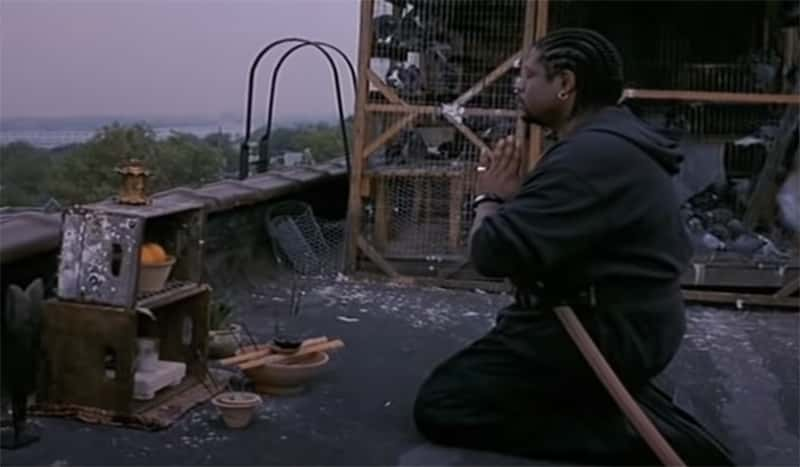 Ghost Dog: The Way of the Samurai (1999), Plywood Productions
Ghost Dog: The Way of the Samurai (1999), Plywood Productions
24. Inspiration in the Literature
Throughout Ghost Dog, there are quotations for each chapter of the film. These quotations are lifted directly from Yamamoto Tsunetomo’s seminal book Hagakure: The Way of the Samurai.
 Ghost Dog: The Way of the Samurai (1999), Plywood Productions
Ghost Dog: The Way of the Samurai (1999), Plywood Productions
23. Killer Bees on the Swarm
Ghost Dog was not only scored by the man behind Wu-Tang Clan, The RZA, but it also marked his debut appearance in a film, as the camouflaged man Ghost Dog meets at the end.
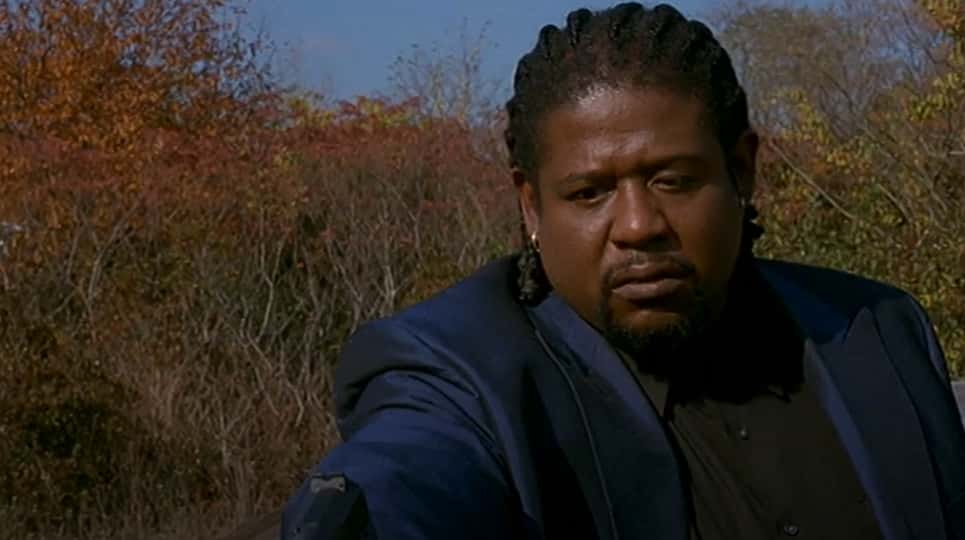 Ghost Dog: The Way of the Samurai (1999), Plywood Productions
Ghost Dog: The Way of the Samurai (1999), Plywood Productions
22. Call Back
Paying tribute to the unfortunate death of Nobody in his previous film, Dead Man, Jarmusch has the actor Gary Farmer play a character in Ghost Dog by the same name, and even has him repeat his famous line from Dead Man: “Stupid fucking white man!”
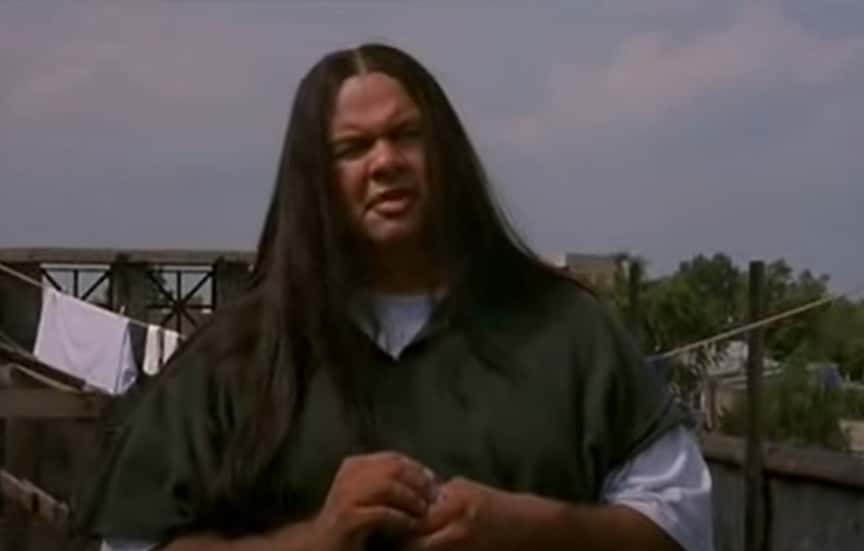 Ghost Dog: The Way of the Samurai (1999), Plywood Productions
Ghost Dog: The Way of the Samurai (1999), Plywood Productions
21. Tough Guy
A samurai without a master is known as a “Ronin,” and the 1962 film Harakiri (also known as Seppuku, as both terms apply to the ritual suicide) is one of the best movies about ronin. While the film is a classic, the actor who plays the film's protagonist, legendary Tatsuya Nakadai, didn’t have the best time making the movie as director Masaki Kobayashi wanted to film to be as real as possible and had the fight scenes shot with real swords. Understandably, this scared Nakadai.
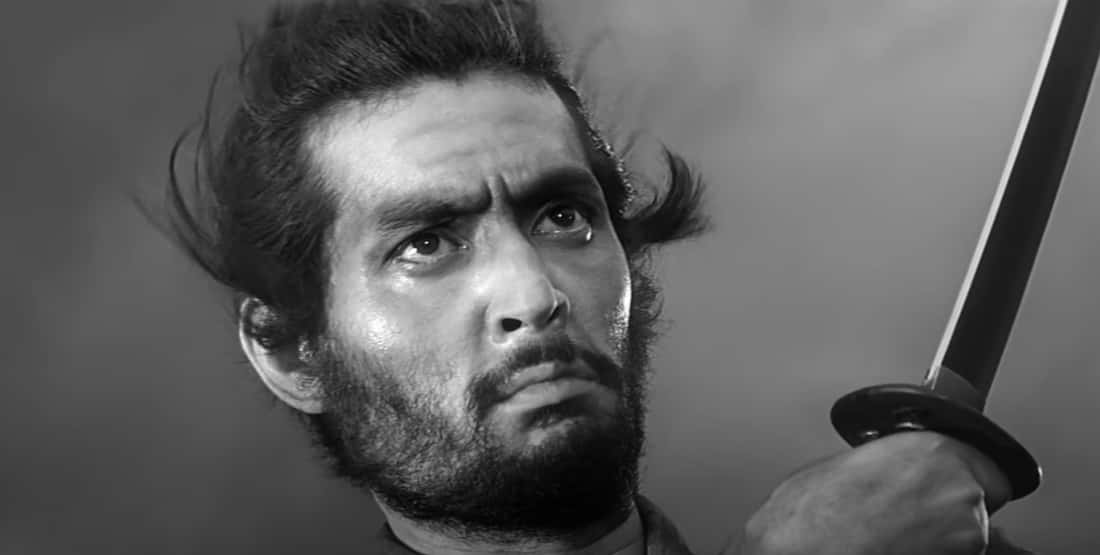 Hara-Kiri (1962), Shochiku
Hara-Kiri (1962), Shochiku
20. Scared But Appreciated
Tatsuya Nakadai may have been acting in fear while shooting Harakiri, but he would later go on to say that it was his favorite film that he was ever in—and that dude acted in over 100 movies.
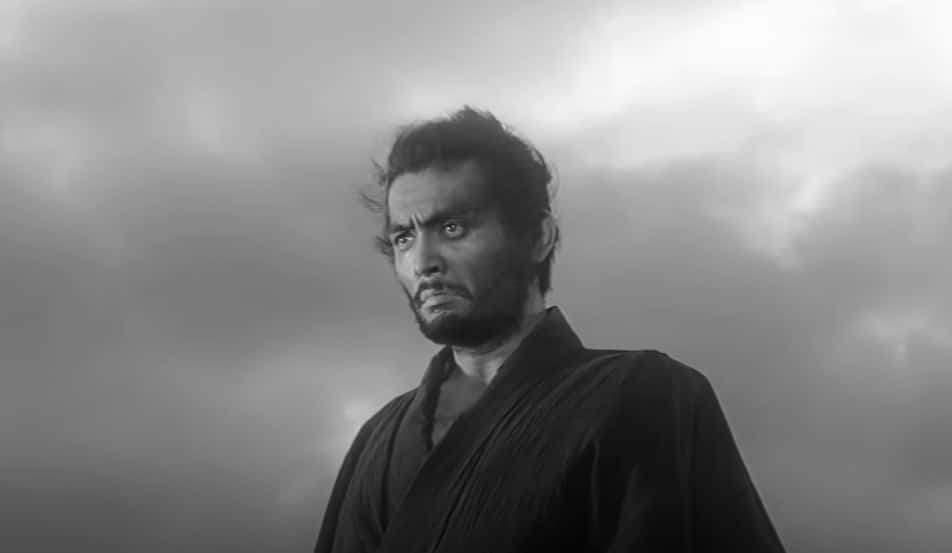 Hara-Kiri (1962), Shochiku
Hara-Kiri (1962), Shochiku
19. Signed Into History
The Li clan in the movie Harakiri were based on a real Japanese clan that had many important, and often controversial, figures from modern Japanese history. One notable person was the policymaker under the Tokugawa Shogunate, Naosuke. Naosuke secured himself a controversial legacy in history by being the man who signed the Harris Treaty with the United States, which allowed the western power to have unprecedented access to Japanese markets and economically penetrate the country.
18. Shakespearean Samurai
Kurosawa’s Throne of Blood was based on William Shakespeare’s classic Macbeth. In Macbeth, Kurosawa saw a parallel between the issues facing medieval Scotland and 20th century Japan and used the film as a cautionary tale directed at his home country. Michael Fassbender, the actor who portrayed Macbeth himself in the 2015 film adaptation, stated that his personal favorite adaptation of the play is Throne of Blood.
17. Spoiler Alert
At the end of Throne of Blood, the character Toshirô Mifune plays is shot with arrows, and in order to evoke real fear from the actor, who was the most famous in the entire country, Kurosawa had professional archers shoot real arrows at him. Yeah, that’ll no doubt put the fear into a man who thinks life is but a stage.
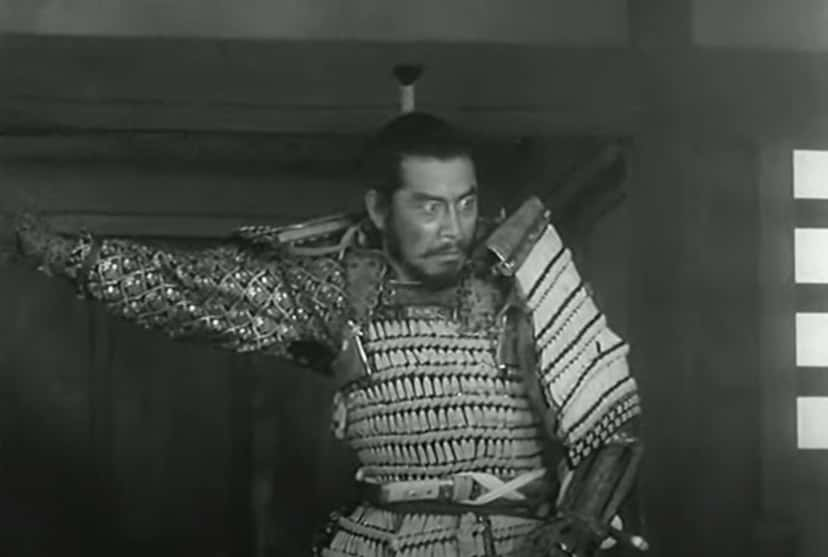 Throne of Blood (1957), Toho Company
Throne of Blood (1957), Toho Company
16. Magnificent Samurai
Red Sun was a samurai film hit and was also a truly international film, as it not only featured one of The Magnificent Seven (Charles Bronson) and one of the Seven Samurai (Toshirô Mifune), but the other two stars of the film were from France and Switzerland, respectively, and it was filmed in Spain.
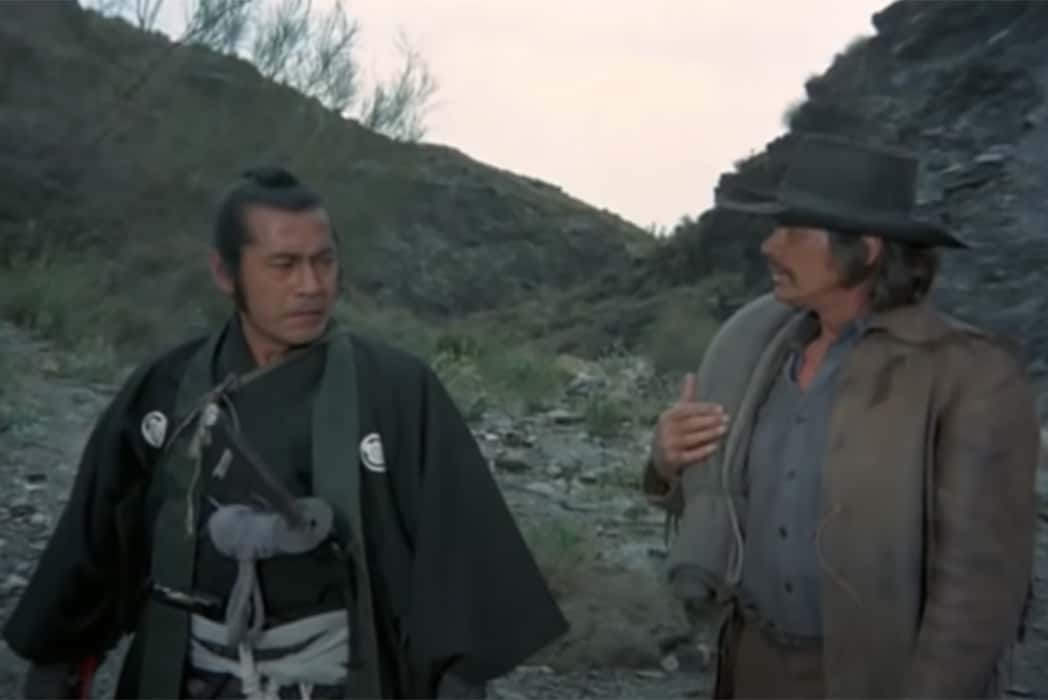 Red Sun (1971), Oceania Produzioni Internazionali Cinematografiche
Red Sun (1971), Oceania Produzioni Internazionali Cinematografiche
15. As Real As It Gets
Kurosawa was such a trusted figure in Japanese culture, that for the making of his 1980 classic Kagemusha, Japanese museums loaned him legitimate costumes and armor—some of which are considered national treasures—for the actors to don during filming. These costumes were reserved for the stars, however, as there were too many people to stay true to the time, as there were over 5,000 extras for the final battle scene alone.
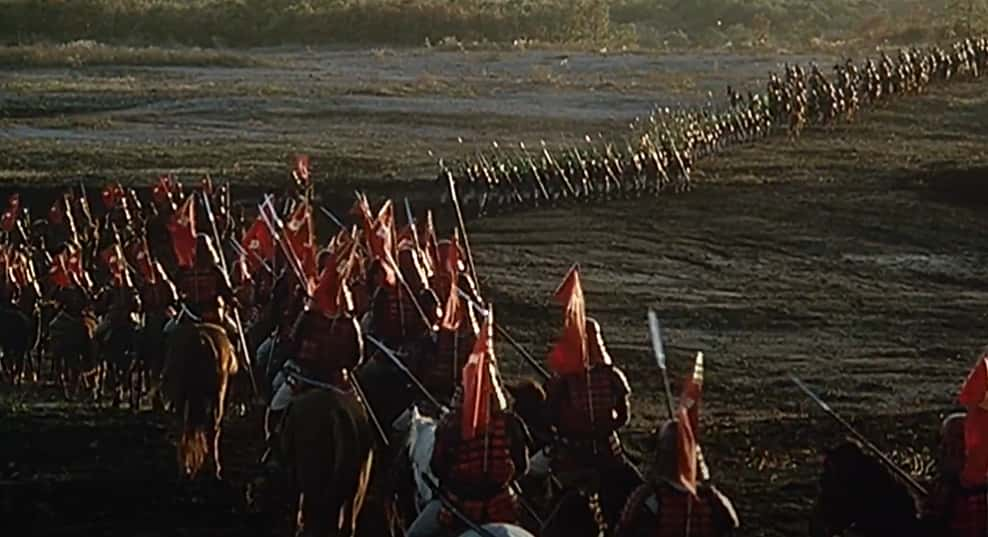 Kagemusha (1980) , Toho Company
Kagemusha (1980) , Toho Company
14. Thanks, Guys
Aware of Kurosawa’s genius, two American film icons teamed up to help him secure funding and proper promotion in America for the release of Kagemusha. George Lucas and Francis Ford Coppola financially backed him at first and served as executive producers in order to introduce him to Western audiences the proper way.
13. End of an Era
Most samurai films are set in the Tokugawa era (1600-1868) of Japanese history, therefore the stories told frequently take on the role of dealing with the end of the feudal era. Since the Tokugawa era was peaceful, wandering ronin sprouted up as they had no war to fight and were faced with the themes of alienation and coming to terms with a change in society. They also display the issues of inequality and stratification of classes during the era.
12. Blind Samurai
There are many staple characters in the samurai genre. Zatoichi is one of the most famous and is a master swordsman who is blind and works as a masseur. Another blind samurai is the female fighter Oichi, the Crimson Bat.
11. Conflicting Ideals
The main theme of most samurai films is the confrontation of the samurai ideals: ninjo and giri. Ninjo is the human moral obligation to do what is right, while giri is the samurai obligation of loyalty to their clan.
10. Life in China
Toshiro Mifune is one of the most famous and influential actors in Japanese history, but he had an interesting beginning to his life. Born to Japanese Methodist missionaries, he spent his life in China until he was 19 and was drafted into the Imperial Japanese Army.
9. Catching a Break
Put into the aviation division, Mifune served in World War II with the aerial photography unit. He spent his young adult life as a photographer, it wasn’t until he was in his late 20s when a friend secretly entered him into a talent content that he discovered acting. After having impressed some scouts, Akira Kurosawa was convinced by a friend that he had to show up at the event and watch him.
8. Out in the Wild
Kurosawa was enamored by Mifune and quickly made him his muse, even though he was the not the typical, genteel style of a samurai. Instead, Mifune and Kurosawa crafted his characters as a contrasting, brooding samurai. Mifune went through peculiar tactics to achieve his results: For Rashomon, he studied video footage of lions as they roamed the wild.
7. Not Luke’s Father
Toshiro Mifune’s success wasn’t just limited to Japanese audiences, and he was beloved worldwide. In an attempt to bring him deeper into the American market, George Lucas offered him the roles of both Darth Vader and Obi-Wan Kenobi in the Star Wars franchise, but he turned them down.
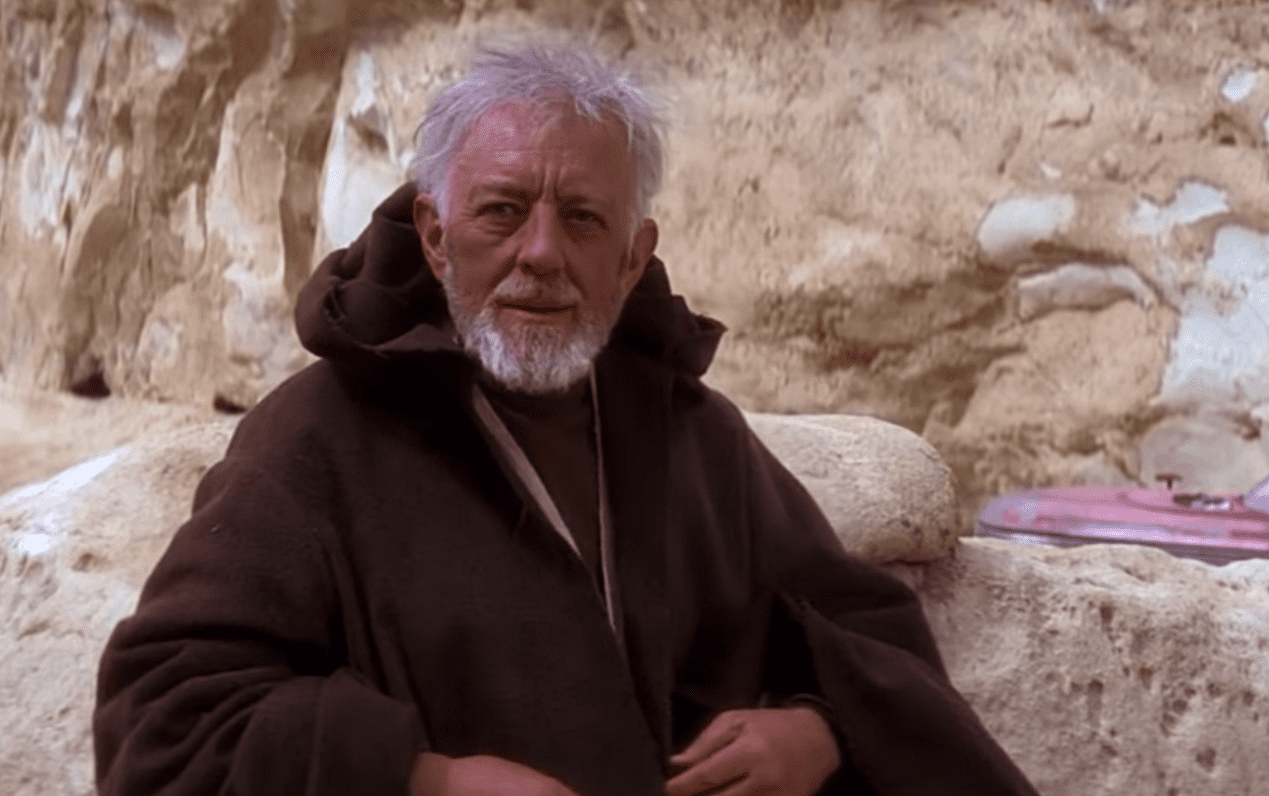 Star Wars: Episode IV - A New Hope (1977), Lucasfilm
Star Wars: Episode IV - A New Hope (1977), Lucasfilm
6. Disagreements
After 16 films together, Mifune and Kurosawa had a falling out while filming the movie Red Beard. By that point, Mifune had a production company, and they were struggling. For the movie, Mifune had to grow out a long beard, and combined with the shoot, he spent 2 years dedicated to Kurosawa, making it impossible to take any other jobs. As he was living through a rough financial period, a strife that would unfortunately last many years grew between the two legends.
5. French in Name
The Last Samurai is actually based on French soldiers who resigned their positions and opted to fight with what was left of the dissolving Shogunate of Japan.
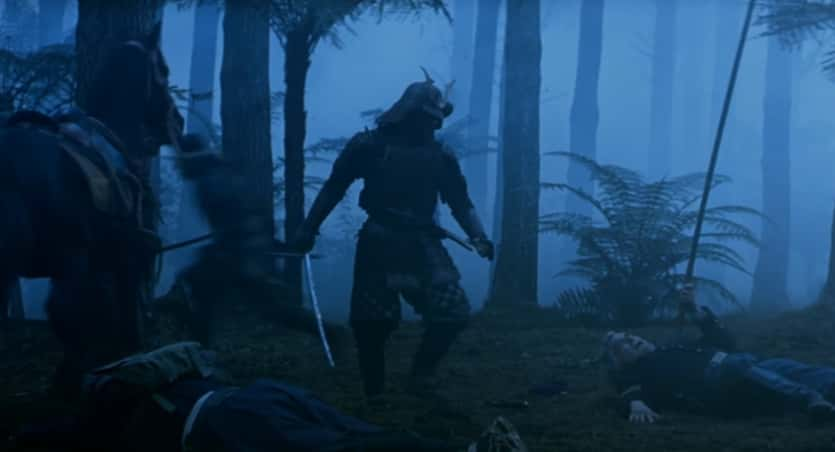 The Last Samurai (2003), Warner Bros.
The Last Samurai (2003), Warner Bros.
4. Dedication to the Craft
As we all know by now, Tom Cruise is an intense guy. He took his role in the film The Last Samurai quite seriously and prior to filming, dedicated two years to learning the Japanese language and swordsmanship.
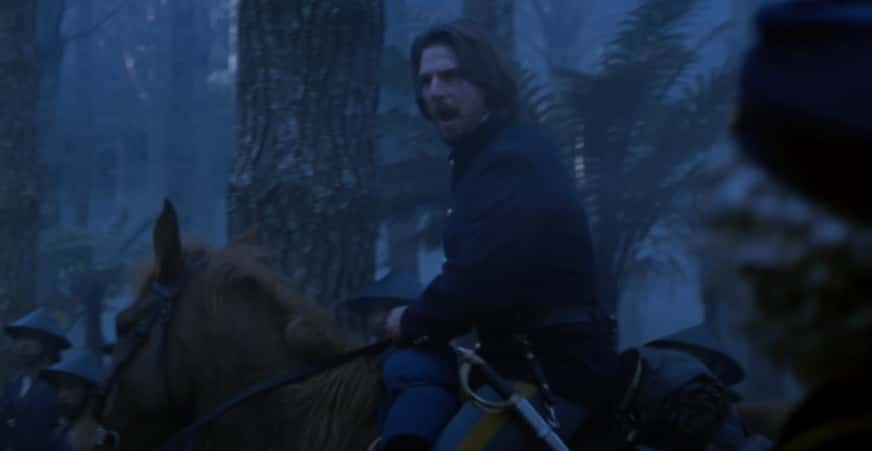 The Last Samurai (2003), Warner Bros.
The Last Samurai (2003), Warner Bros.
3. Off Set
While all of Tom Cruise’s hard work paid off for the movie, he probably didn’t get to use much of his new knowledge in the real world, as the film was actually shot in New Zealand, not Japan.
2. Preparation is Key
The final battle scene is always a climactic feast for the moviegoer, and the production team of The Last Samurai knew that they had to prep the cast correctly. Over 500 extras were used for the filming of the scene, and they were specifically trained for the scene for 10 days at the nearby Clifton Rugby Grounds of New Plymouth, New Zealand.
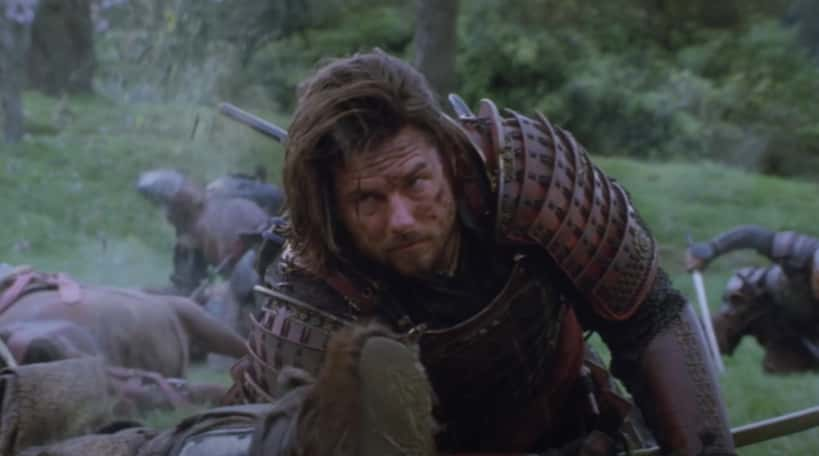 The Last Samurai (2003), Warner Bros.
The Last Samurai (2003), Warner Bros.
1. They’re Just Toenails
Since production went on so long, the final battle scene of Seven Samurai was filmed in February. It actually snowed before the shot the battle, and the crew had to wash down the snow, and shoot in the mud. Kurosawa braved the grueling conditions with his cast and crew, wearing period accurate sandals, and he grew so cold that he began to lose his toenails.

